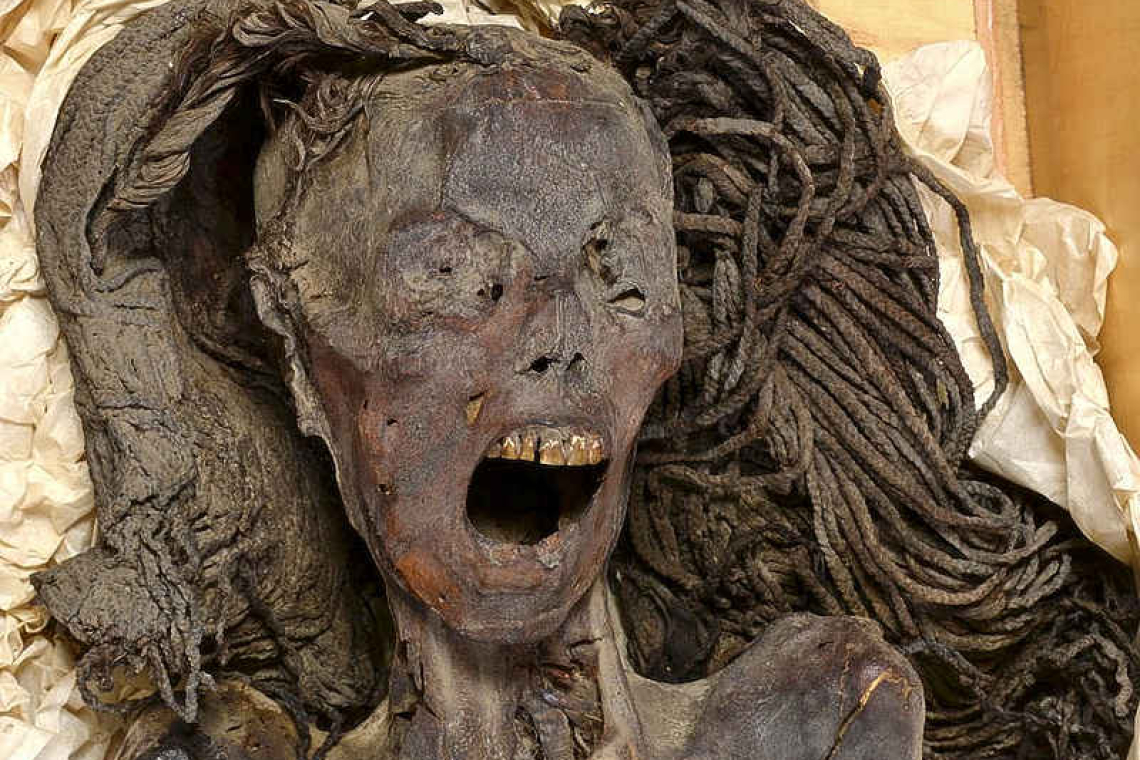CAIRO--It is a startling image from ancient Egypt - a mummy discovered during a 1935 archaeological expedition at Deir el-Bahari near Luxor of a woman with her mouth wide open in what looks like an anguished shriek. Scientists now have an explanation for the "Screaming Woman" mummy after using CT scans to perform a "virtual dissection." It turns out she may have died in agony and experienced a rare form of muscular stiffening, called a cadaveric spasm, that occurs at the moment of death. The examination indicated that the woman was about 48 years old when she died, had lived with mild arthritis of the spine and had lost some teeth, said Cairo University radiology professor Sahar Saleem, who led the study published on Friday in the journal Frontiers in Medicine. Her body was well-preserved, being embalmed roughly 3,500 years ago during ancient Egypt's glittering New Kingdom period using costly imported ingredients such as juniper oil and frankincense resin, Saleem added. The ancient Egyptians viewed preservation of the body after death as crucial to secure a worthy existence in the afterlife. It was customary during the mummification process to remove the internal organs, aside from the heart, but this had not occurred with this woman. "In ancient Egypt, the embalmers took care of the dead body so it would look beautiful for the afterlife. That's why they were keen to close the mouth of the dead by tying the jaw to the head to prevent the normal postmortem jaw drop," Saleem said. But the quality of the embalmment ingredients "ruled out that the mummification process had been careless and that the embalmers had simply neglected to close her mouth. In fact, they mummified her well and gave her expensive funerary apparels - two expensive rings made of gold and silver and a long haired-wig made from fibers from the date palm," Saleem added. "This opened the way to other explanations of the widely opened mouth - that the woman died screaming from agony or pain and that the muscles of the face contracted to preserve this appearance at the time of death due to cadaveric spasm," Saleem said. "The true history or circumstances of the death of this woman are unknown, hence the cause of her screaming facial appearance cannot be established with certainty." Cadaveric spasm, a poorly understood condition, occurs after severe physical or emotional suffering, with the contracted muscles becoming rigid immediately following death, Saleem said. "Unlike postmortem rigor mortis, cadaveric spasm affects only one group of muscles, not the entire body," Saleem added. Asked whether the woman may have been embalmed while alive, Saleem added, "I don't believe that this is possible."







